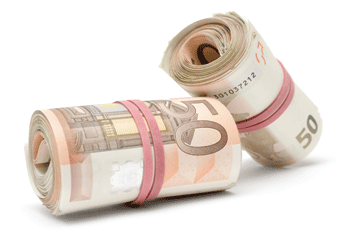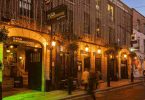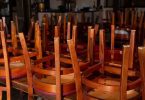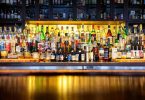Drinks industry’s contribution to the economy
@font-face { font-family: “Cambria”; }p.MsoNormal, li.MsoNormal, div.MsoNormal { margin: 0cm 0cm 10pt; font-size: 12pt; font-family: “Times New Roman”; }div.Section1 { page: Section1; }

Our drinks industry continues to make a substantial contribution to ecnomic activity in Ireland.
Again authored by DCU’s Anthony Foley, the DIGI report’s key conclusions indicate the large and continuing decline in the very large numbers of people in full- or part-time employment in the drinks industry – particularly the employment-intensive pub and bar sector.
“We’re not talking about small numbers in this sector; it employs tens of thousands of people,” stressed Tony Foley, adding that while the sector shows comparatively large levels of economic activity, this is in significant decline.
Both the drinks industry and the economy have declined greatly since the last such report was published in 2008 and it has continued to do so even since the figures contained in this report were published.
Much of the available data for identifying the economic role of the drinks industry relates to 2008 and 2009 and consequently does not capture the continuing decline from 2009 to date, stated DIGI Chairman Kieran Tobin at the launch. He pointed out, “This is likely to continue given the pressures facing the on-trade at present”.
Some 78,000 people (50,000 full-time job equivalents) were employed in the industry as of August 2010. Unfortunately the bar sector, responsible for 90 per cent of this employment, experienced a sales volume decline of 16.6 per cent between November 2008 and August this year. That led to an employment drop estimated by DIGI at about eight per cent and to concerns for the longer-term viability of smaller and rural pubs.
Manufacturing
The drinks sector undoubtedly ranks as a major player in the economy. Its manufacturing arm is responsible for 2.8 per cent of total manufacturing output and it enjoyed turnover of €2.95 billion in 2008, the latest year for which figures are available. €230 million was paid out in wages that year with total labour costs reaching €335 million. €563 million was spent on services inputs by drinks manufacturers with total purchases of €1.7 billion in manufacturing. As DIGI points out, “Each €100 of production in drinks manufacturing generates €61 of purchases from other sectors”.
But the numbers employed in manufacturing have declined by one third since 2000, from 6,146 to 4,263 in 2008. In addition to the decline in consumption, restructuring, productivity improvements, outsourcing and technological change have also played their part in this employment decline in manufacturing which DIGI reckons today stands at 3,837.
The drinks sector is responsible for 2.2 per cent of total manufacturing employment and at an average of €54,849 per employee, those employed in this sector enjoy average wages and salaries some 39 per cent above the average for manufacturing (€39,350). This may well be due to the fact that the skills levels in this sector also tend to be higher than average.
The average size of a local unit in drinks manufacturing is higher than in manufacturing as a whole. But there again, gross output and net output per local unit or per production establishment are substantially higher in the drinks industry than in manufacturing as a whole.
Drinks manufacturers also provide a major boost to the international image of Ireland through brands such as Guinness, Baileys, Jameson and other products in the drinks sector.
As well as being a major sponsor of festivals, the drinks industry is a major sponsor of horse racing – the largest sponsor after the breeders and bookies.
Retailing & distribution
Together, pubs, bars and nightclubs employ around 69,000 people full- and part-time. The wholesale sector generates a relatively small number of jobs compared to the totals referred to above and the report states, “Overall the off-licence and wholesale sectors employ about 4,800 jobs or 3,000 full-time job equivalents”.
The retail segment is characterised by a large number of small outlets and is very much a small firms industry.
Last year there were 9,082 publicans licences, 1,770 spirits off-licences and 3,705 wine off-licences (up from 2,023 in 2002). There were 1,935 full off-licences.
Stand-alone off-licences were estimated to employ about 2,600 in 1999. This related to 543 enterprises, increasing to about 1,500 in 2008 with the growth in sales volumes running at a slightly lesser pace. But staff numbers are unlikely to have increased by the same proportion due to loss of market share to the new arrivals. DIGI estimates employment in the off-trade in 2008 at around 4,500.
However the employment-intensive on-trade has been losing market share to the less employment-intensive off-trade which enjoyed 35 per cent of the market’s sales value (compared to 28 per cent in 2000) and 55 per cent of its volume sales in 2009.
Employment data from Fáilte Ireland provides “a stark picture” of the on-trade’s decline: “In 2006 there were 88k persons working in public houses. In 2007 this had increased to 102k persons but in 2008 this had dropped to 65k persons”.
The average number of full- and part-time staff per pub ranged between 6.9 and 8.0 in 2008. Using Bord Fáilte data, bar staff make up 45 per cent of the total year-round employment figure while food service personnel make up 24 per cent, managers account for 15 per cent, culinary staff eight per cent and supervisors five per cent.
The wage bill for pubs and bars tops €1.14 billion for what DIGI describes as an important part of the Irish tourism product. For example, the Guinness Storehouse is now the largest tourist attraction in the country garnering over one million visitors last year, the vast bulk of whom are likely to be from abroad (unlike those going to the next most popular attraction, Dublin Zoo, where the attendance – 88 per cent that of the Storehouse – is more likely to comprise indigenous Irish visitors).
According to DIGI, “In 2009 seven per cent of visitors identified the pub as an advantage. While seven per cent may not appear to be a high figure, it is much higher than factors such as good accommodation and good internal transport”.
There is nothing as widespread as the pub in tourism areas where they outnumber tourism offices by a factor of 10 to one. Pubs are also used extensively by foreign visitors for meals.
Consumption
Overall, alcohol accounts for 9.98 per cent of the current Consumer Price Index compared to 11.9 per cent in the 2001-based CPI.
Personal expenditure on beverages was €7.185 billion or 8.5 per cent of total consumer expenditure last year. €6.531 billion of this was expenditure on alcohol (7.7 per cent of total consumer expenditure). €654.3 million was spent on non-alcoholic drinks. Expenditure on alcohol peaked in 2007 at €7.23 billion. So alcohol’s share of total personal consumption has declined from 9.9 per cent in 2000 to 7.7 per cent in 2009.
Part of the 2009 declines are due to increased levels of cross-border shopping but a substantial decline in actual consumption has also taken place. DIGI points out that with the lowering of excise in the last Budget, alcohol consumption is likely to increase relative to 2009 driven by increased off-sales; but bar sales continue to decline this year.
The volume of bar sales has now declined by 26 per cent between 2000 and 2009 with volumes declining 16.3 per cent between 2007 and last year alone.
Exports
2009 saw drinks exports reach nearly €1 billion with a drinks trade surplus of €329.5 million over an imports bill of €668.2 million. Drinks exports account for 1.2 per cent of total exports. This export figure means that drinks exports were pretty much 90 per cent of our much-vaunted dairy exports last year.
Beer comprises 24.8 per cent of our alcohol exports, cider 21.9 per cent, whiskey 14.9 per cent and other spirits 37.9 per cent. Altogether exports of alcohol, at €923.5 million, exceeded alcohol imports by €488 million.
DIGI makes the point that because of the growing level of international competition, the increasing demand for non-national product in today’s drinks market and the desire for new brands by the Irish consumer, domestic drinks manufacturers have lost market share. Nevertheless, domestic manufacturing still maintains large shares of the 2009 domestic drinks market: 86.3 per cent of the cider market, 68.6 per cent of the beer market and 51.7 per cent of the spirits market.
More significantly, the DIGI points out, “The net foreign exchange earnings of drinks exports are relatively high because of the high domestic content of both service and materials inputs. In the absence of domestic production of beer, spirits and cider it is likely that consumption levels would be relatively unchanged and would have to be sourced through imports from other economies. Consequently the existence of the domestic producers prevents a larger level of drinks imports”.
Taxation
Altogether, excise on the industry amounted to €968 million in 2009, with over €2 billion taken in VAT and excise receipts. Drinks excise accounts for 19.8 per cent of all excise taken while VAT on drinks accounts for 9.8 per cent of total VAT returns. An estimated €3.6 million was collected in 2009 in off-licence renewals.
With the total volume of the alcohol market down 14.1 per cent between 2007 and 2009, per adult consumption of alcohol was 15.7 per cent down and per capita consumption 16.4 per cent down during this period.
The report concludes that the on-trade sector provides the most significant employment contribution at 89 per cent but it continues, “Unfortunately this sector has been the worst performing sector with large employment declines in recent years. Over the longer term the role of the public house in alcohol consumption has been in decline. This has been caused by market changes and new regulations. Faced with a very difficult economic environment over the next few years, it is likely that the decline in this sector will continue”.
As Tony Foley pointed out at the launch, “In the absence of something to change the decline, it will continue and if that decline is even half that of the present rate, it’s going to be losing thousands of jobs every year”.
In contrast, the UK’s Lib Dem Business Secretary Vince Cable publicly recognised the pub industry recently as a “sociable and economically important industry”.
There, the Department of the Environment, Food and Rural Affairs has stated that it recognises the importance of pubs to the UK economy and has “no desire to accelerate pub closures or place unnecessary burdens on business”.
Even the Prime Minister David Cameron has gone on record as stating that he wants the coalition government there to be a “pub-friendly government”.
Would that it were so here…..
@font-face { font-family: “Cambria”; }p.MsoNormal, li.MsoNormal, div.MsoNormal { margin: 0cm 0cm 10pt; font-size: 12pt; font-family: “Times New Roman”; }div.Section1 { page: Section1; }








